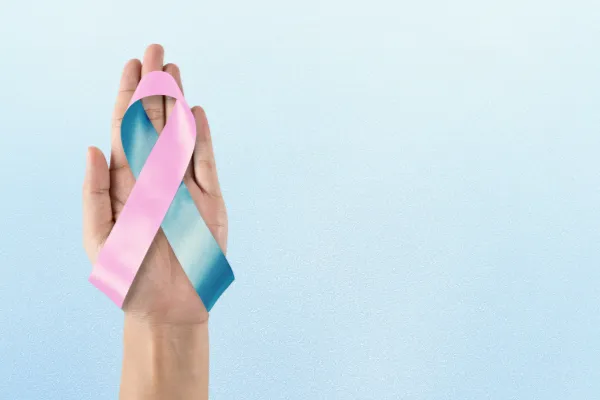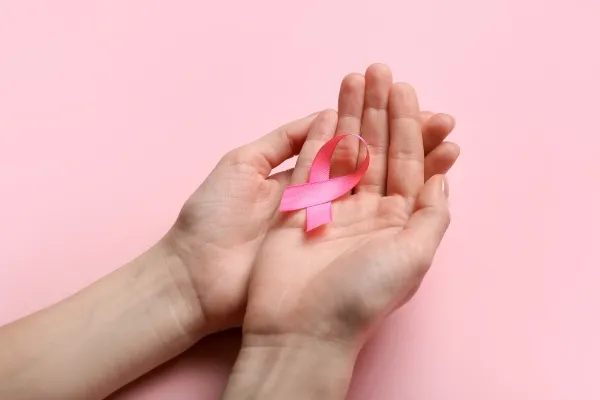Topics
What is a tampon?
Tampons are a type of menstrual product designed to absorb menstrual fluid. A tampon is a small, cylinder-shaped product manufactured using soft, highly absorbent cotton or rayon-based materials. Like sanitary pads, tampons are intended for one-time use only and should be appropriately disposed of afterwards.
While it may seem relatively straightforward, women must know how to safely insert, remove, and dispose of tampons.
How to insert a tampon?
Follow these easy steps to insert a tampon:
- Ensure your hands are clean: Wash your hands thoroughly with soap and water before handling the tampon to maintain hygiene.
- Choose the right tampon:Tampons come in different sizes and absorbencies. Select the appropriate tampon based on your flow. Lighter flow may require a smaller size, while heavier flow may require a larger size.
- Unpack the tampon:Remove it from its packaging, ensuring that the wrapper is intact, and the tampon is clean and undamaged.
- Position yourself comfortably: You can either sit on the toilet with your knees apart or stand with one foot raised on the toilet seat or a stable surface.
- Insert the tampon:
- Hold the tampon applicator securely with your thumb and middle finger at the grip area.
- Use your other hand to separate your labia (the outer folds of your vulva) to gain easier access to the vaginal opening.
- Position the rounded tip of the tampon applicator at the opening of your vagina.
- Gently and steadily push the tampon inside your vagina until your fingers touch your body.
- If you feel resistance or discomfort while inserting, try adjusting the angle or using a smaller-size tampon.
- Make sure the string is left hanging outside the vagina. This string will later be used for removal.
- Remove the applicator:Remove the cardboard or plastic barrel after inserting the tampon and dispose of it in a sanitary bin.
Remember, it may take a few tries to get comfortable with using tampons. Consulting with a doctor is always a good idea if you have any concerns or difficulties.
How to remove a tampon?
Follow these easy steps to remove a tampon:
- Wash your hands with soap and water.
- Find a comfortable and private place. You can either sit on the toilet with your knees apart or stand with one foot raised on the toilet seat or a stable surface.
- Take a few deep breaths to relax your muscles.
- Locate the string that is left hanging outside the vagina with your fingers.
- Once you have a firm grip on the tampon string, relax your muscles and gently pull the tampon downward and out of your vagina. It should slide out smoothly without causing any discomfort.
Do not panic if you are not able to find the string or have difficulty removing the tampon. Instead, stay calm and take your time. You can change your position to help move the tampon down or bear it down. If you still cannot remove it, do not hesitate to seek medical attention.
How to dispose used tampons?
Proper disposal of menstrual products is vital, not just for hygiene purposes but also for the environment. Follow these steps:
- Wrap the used tampon in toilet paper or tissue; if none is available, use the wrapper from the new tampon.
- Dispose of the wrapped tampon in a sanitary bin.
- Never flush tampons down the toilet, as they can cause plumbing issues.
- If a trash bin is not available, wrap the used tampon neatly and take it with you to dispose of properly later.
- After removing the tampon, wash your hands thoroughly with soap and water.
What are the 17 common questions about tampons?
Are you considering using tampons but are hesitant to do so because of what you have heard? Let us answer these 17 common questions about tampons so that you can use them confidently.

Yes, tampons are generally considered safe. Tampons sold today are made with absorbent fibres without elemental chlorine, ensuring they do not contain chemicals like dioxin (a pollutant in the environment).
Remember to:
- Change tampons regularly (4 to 8 hours, depending on your flow).
- Use the right absorbency.
- Wash your hands before and after use to reduce the risk of infections.
Tampons can potentially cause Toxic Shock Syndrome (TSS), although the risk is relatively low. TSS is a rare but potentially life-threatening condition caused by an infection.
Research shows that the condition most likely occurs when the tampon is left in for an extended period beyond the 4 to 8 hours recommended. It is wise to be aware of TSS symptoms:
- Fever
- Vomiting
- Diarrhoea
- Dizziness
- Rash
If you experience any of these symptoms during your period or shortly after your period, stop using tampons and seek medical attention right away.
Like many other consumer products, tampons undergo regulatory testing to ensure safety. The materials used in tampons are generally considered safe for use.
When used correctly and changed regularly, tampons help women to maintain good menstrual hygiene.
To ensure hygiene and reduce the risk of infections and toxic shock syndrome (TSS), wash your hands before and after inserting or removing a tampon. Change them every 4 to 8 hours to reduce the likelihood of bacterial growth.
No, it is not possible for a tampon to get lost in the vagina. The vagina is a closed muscular canal approximately 3 to 4 inches long. The cervix, located at the end of the vagina, prevents objects from entering the uterus.
The tampon is designed with a string attached to it, which remains outside the vagina for easy removal. You can always feel the string and use it to retrieve the tampon when you're ready to remove it.
However, there may be instances where the tampon string is not easily visible or accessible. This can happen if the tampon has shifted higher inside the vagina, or the string has become entangled or tucked inside.
Stay calm and try different positions to allow better access to your vagina. If you are still unable to locate the tampon, seek immediate medical attention.
While it is not possible for a tampon to get lost in the vagina, it can occasionally be challenging to find or remove it. Being familiar with your body and maintaining good hygiene practices will help ensure a smooth experience with tampon use.
Tampons themselves do not make period cramps worse. However, some individuals may experience increased discomfort or cramps while using tampons due to factors unrelated to the tampons themselves.
Tampons can be used for all menstruation flow. However, its size and absorbency should match the amount of flow to avoid discomfort and reduce potential health risks.
This depends on your menstrual flow and tampon absorbency level. However, tampons should be changed every 4 to 8 hours as recommended. Do not leave tampons in for more than 8 hours.
Tampons should be changed every 4 to 8 hours, depending on your menstrual flow. Below are some signs that you should replace the older one:
- If there is leakage, your tampon may be full and, thus, needs to be changed.
- If you feel dampness or wetness, your tampon may be reaching its capacity.
- During heavier flow days, you may need to change your tampon every 4 to 6 hours or more frequently if necessary. This helps prevent leakage and maintains comfort.
If your tampon is causing pain, it could be due to any one of the following reasons:
- Improper insertion technique.
- Wrong size or absorbency.
- Vaginal dryness - a water-based lubricant can help with the insertion process.
- Infection or inflammation can cause itching, burning or abnormal discharge, all of which can cause pain.
- Allergic reaction to materials in tampons. Consider trying unscented or hypoallergenic tampons to see if it alleviates the pain.
It is not necessary to change your tampon every time you urinate. Urination happens from the urethra, a separate opening from the vagina where the tampon is. However, if you feel that your tampon is saturated or uncomfortable after urinating, it may be a good opportunity to consider changing it.
It is not recommended to sleep with a tampon in, especially overnight. To ensure better sleep and minimise potential risks, use a pad or menstrual cup.
Tampons are generally safe if you have an IUD in place. During insertion, the IUD is guided through the vagina, cervix, and into the uterus. The IUD remains in the uterus, whereas the tampon is in the vagina.
It is crucial to refrain from using tampons until after your 6-week postnatal check-up. During this time, your body is healing from childbirth, and you may have wounds from the delivery, including the site where the placenta was attached to the uterine wall and potential tears or cuts in and around the vagina.
Using tampons before these wounds have fully healed can increase the risk of infection. It is recommended to use maternity pads or sanitary towels during this period of healing. The bleeding, known as lochia, can be heavy initially and gradually decrease over the following weeks.
When using pads or towels, change them regularly and wash your hands before and after handling them. It is also advised to have a daily bath or shower to maintain cleanliness in the area.
Yes, you can use tampons while swimming. Tampons are designed to be worn internally and are made of absorbent materials that collect menstrual blood. They can be a convenient option for women who want to swim or engage in water activities during their period.
When inserted correctly, tampons should not interfere with swimming or cause discomfort. It is essential to follow the instructions provided with the tampons and change them regularly to maintain proper hygiene.
Currently, no scientific evidence suggests that tampon use increases the risk of developing endometriosis.
Endometriosis is a complex and multifactorial condition characterised by the presence of endometrial tissue outside the uterus. While the exact cause of endometriosis is still unknown, the condition may develop from a combination of genetic, hormonal, and environmental factors.
There is no scientific evidence to suggest that the usage of tampons leads to infertility. Instead, infertility can be caused by various factors, including hormonal imbalances, structural abnormalities, certain medical conditions, infections, or genetic factors.
Make an appointment at Pantai Hospitals
Make informed choices about your menstrual health. Let us normalise conversations about periods and advocate for menstrual hygiene products that enhance women's lives.
Get in touch with us to book an appointment with our gynaecologists today, or find out more about our Obstetrics and Gynaecology Services at your nearest Pantai Hospital.
Pantai Hospitals have been accredited by the Malaysian Society for Quality in Health (MSQH) for its commitment to patient safety and service quality.













